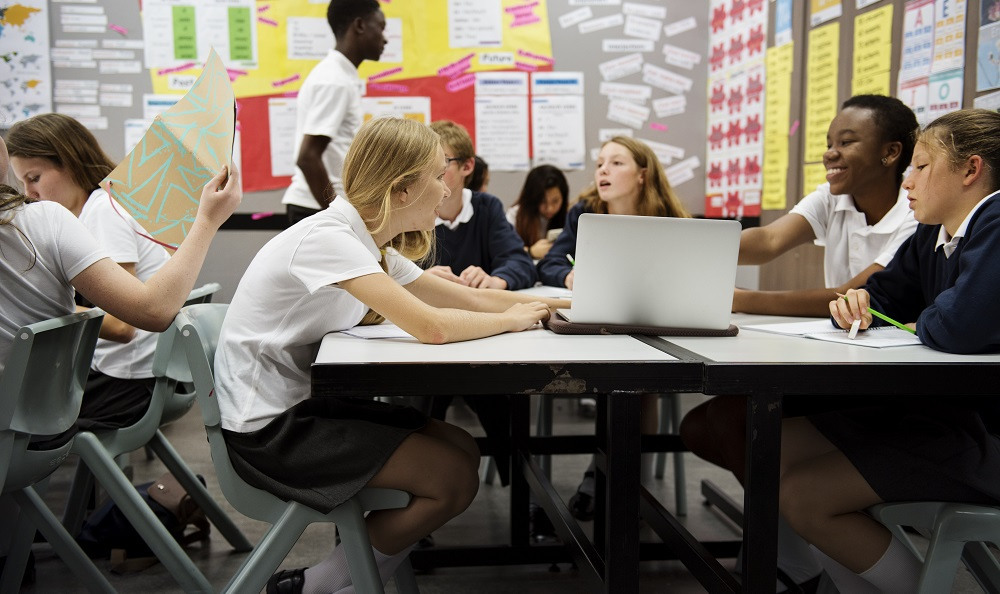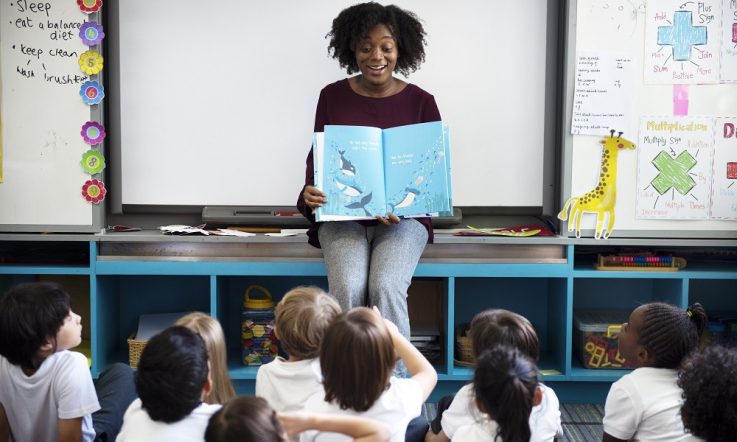Schools and classrooms in Australia are more diverse than the average across the OECD, according to a new report that analyses the latest Teaching and Learning International Survey (TALIS) results.
The Australian report, released today by the Australian Council for Educational Research (ACER), complements the international report released by the OECD in June (OECD, 2019).
TALIS collects internationally comparable data on the learning environment and the working conditions of teachers and principals of students in Years 7 to 10. Results from the 2018 Australian survey show 36 per cent of teachers work in schools where there are more than 10 per cent non-native speakers, and 36 per cent teach in schools where there are at least 10 per cent of students with special needs (Thomson & Hillman, 2019).
‘Working with a diverse student population is the reality for many teachers and schools, across the OECD generally and certainly in Australia,' report co-author and ACER Deputy CEO (Research) Dr Sue Thomson says.
‘Encouragingly, Australian teachers are responsive to these challenges and generally feel confident they are able to provide the appropriate leadership in multicultural classes.'
TALIS offers teachers and principals around the world an opportunity to share their perspectives on the state of education in their own countries, painting a global picture of teachers, the education systems in which they work, and the successes and challenges they face. TALIS 2018 is the third cycle of the survey, and Australia has participated in each cycle.
The 2018 study found 25 per cent of teachers in Australia work in schools in which more than 30 per cent of the students come from socioeconomically disadvantaged homes, 41 per cent in schools in which more than 10 per cent of students are immigrants or from a migrant background, and 62 per cent in schools in which at least 1 per cent of the student population are refugees.
‘Perhaps reflecting the diversity in Australian schools, a high proportion of Australian teachers and principals reported that their schools implement policies and practices related to equity and diversity…' the report reads.
Teachers' time and working conditions
Results from the Australian survey show teachers are working more hours than the OECD average (45 hours per week, compared to 39 hours). Despite this, they're also spending a lower proportion of that time on teaching (19.9 hours compared to the OECD average of 20.6).
Of their time spent in the classroom, they report spending 78 per cent on teaching and learning, with the remainder on classroom discipline and administration. This share of time was even lower in schools with a high concentration of students from socioeconomically disadvantaged homes, and in classrooms taught by teachers with five years or less experience in education.
Despite the challenges, more than 80 per cent of teachers in Australia reported feeling confident in their capacity to teach and manage the classroom.
Resources in Australian classrooms
While resourcing issues were reported as being less of a problem in Australian than the OECD average, Australian lower secondary principals still reported some shortages.
In the Australian survey, the four top resource shortage issues reported by principals that hindered their capacity to provide quality instruction ‘quite a bit' or ‘a lot' were:
- shortage or inadequacy of time for instructional leadership (28 per cent);
- shortage of teachers with competence in teaching students with special needs (18 per cent);
- shortage of vocational teachers (17 per cent); and,
- shortage of qualified teachers (16 cent).
The extent to which resource issues hindered instruction in Australian classrooms varied quite a lot, depending on the socioeconomic status of the school.
The most pressing issue impeding instruction reported by teachers in more disadvantaged schools was a lack of digital technology available for instruction, with almost one-third of teachers (32 per cent) identifying this as a major hindrance to instruction.
While this issue was also the most common hindrance for teachers in more advantaged schools, it was only identified by 13 per cent of teachers.
In addition, disadvantaged schools cited inadequate internet access as a major issue (23 per cent), while 20 per cent of teachers reported that a lack of both digital software and traditional instructional materials such as textbooks hindered instruction. In advantaged schools, less than 10 per cent of teachers reported that these issues impeded their instruction.
Attracting and preparing future teachers
When asked why they decided to become a teacher, over 90 per cent of teachers in the Australian survey cited reasons such as ‘influencing the development of young people' and ‘contributing to society' of moderate to high importance in their career decisions.
In addition, more than 80 per cent reported that a ‘secure job' and ‘reliable income' were of moderate to high importance, compared to 71 per cent and 67 per cent, respectively, for the OECD on average.
In Australia and across OECD countries on average, 90 per cent of teachers indicated that their formal qualifications had included content of some or all of the subjects they now taught, general pedagogy, and pedagogy specific to some or all of the subjects they taught.
At the same time, 84 per cent of Australian teachers indicated they had covered student behaviour and classroom management, compared to 72 per cent across the OECD. Those at the start of their teaching career in Australia reported feeling less prepared in the core areas of subject content, pedagogy and classroom management compared to the OECD average.
When compared to the OECD average, more Australian teachers indicated they had received training in teaching in mixed-ability settings, use of ICT in teaching and teaching in a multilingual or multicultural setting as part of their initial teacher education. Despite this, those who received this training felt no better prepared to teach these areas than teachers on average across the OECD.
Continuous professional development
Participation in professional development is a compulsory requirement for Australian teachers, and TALIS shows 99 per cent participated in some form of PD in the past 12 months. For principals the figure was 100 per cent.
Over 90 per cent of Australian teachers reported that their professional development has had a positive impact on their teaching.
‘Australian teachers who participated in at least one of the professional development activities on multicultural teaching reported higher self-efficacy in operating in multicultural environments than teachers who had not undertaken such training,' the report says.
The area of professional development in which Australian teachers reported the highest level of need was in teaching children with special needs (12 per cent) but this remained below the OECD average of 22 per cent.
References:
OECD (2019), TALIS 2018 Results (Volume I): Teachers and School Leaders as Lifelong Learners, TALIS, OECD Publishing, Paris, https://doi.org/10.1787/1d0bc92a-en.
Thomson, S., Hillman, K. (2019) The Teaching and Learning International Survey 2018. Australian Report Volume 1: Teachers and School Leaders as Lifelong Learners. Australian Council for Educational Research. Retrieved from www.acer.org/talis
To read the full report, The Teaching and Learning International Survey 2018 Australian Report Volume 1: Teachers and School Leaders as Lifelong Learners, by Sue Thomson and Kylie Hillman, visit www.acer.org/talis
Stay tuned: Dr Sue Thomson will be discussing the findings from TALIS in her Teacher magazine column next week.



